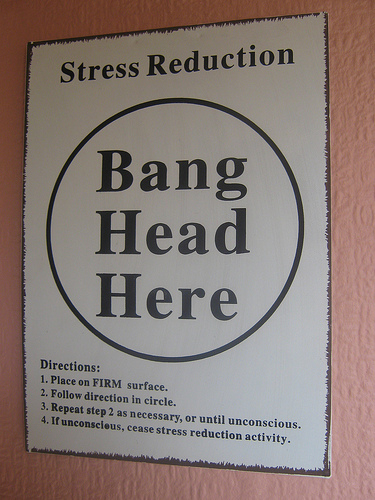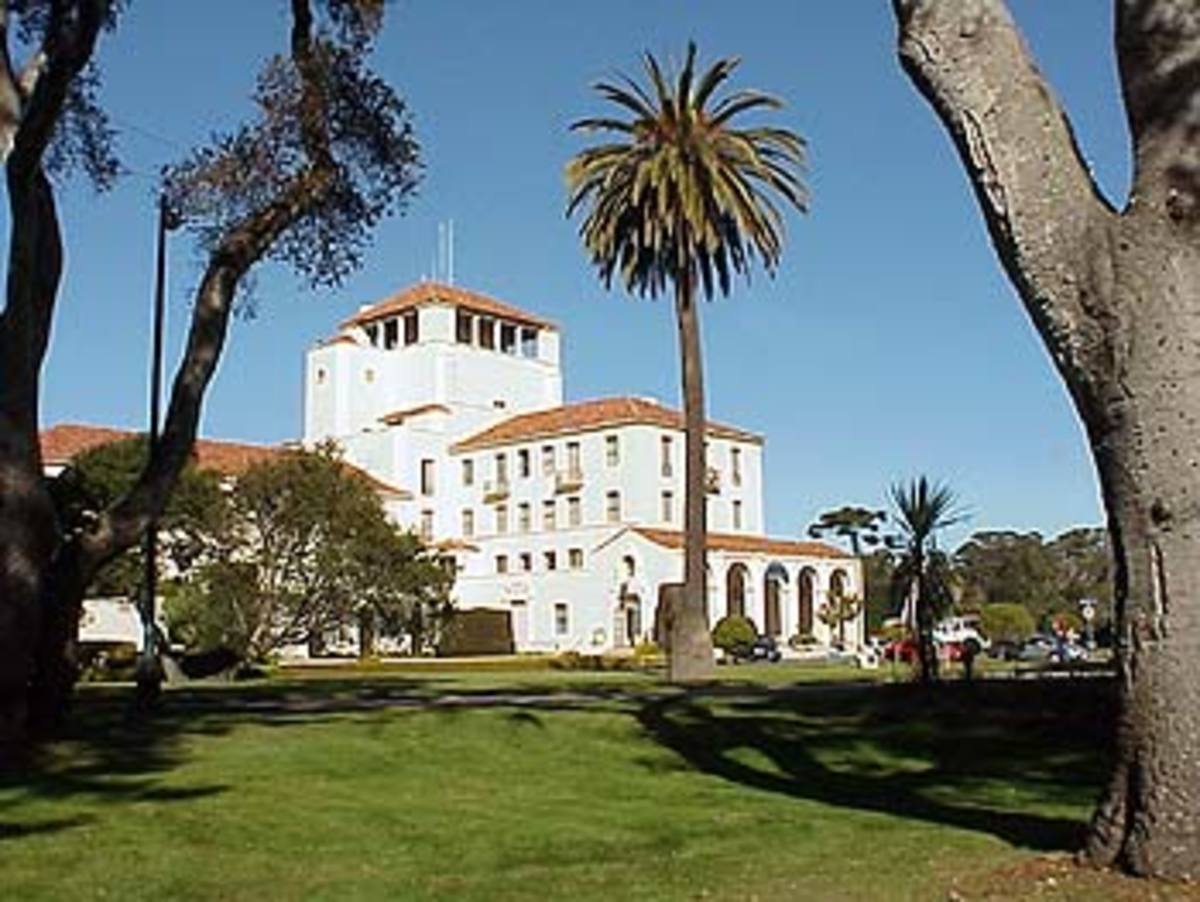The Dangers of For-Profit Colleges and Universities

Please note that this article was written roughly a year ago for one of my college courses, so I do acknowledge the fact that some of my references may be slightly outdated. With that being said, it is not outdated to the extent of undermining the integrity of my writing. If that was the case, I would not be publishing this article. Just something to keep in mind in regards to statements such as "earlier this year", etc. Nonetheless, I was inclined to share this in order to raise awareness and perhaps start some discussion. Thanks for reading, and I hope you enjoy!
In 2009, Joseph Carillo Jr. found himself stumbling through his college education. As a student at American River College, a California Community College located in Sacramento, he struggled to get into all of his necessary classes due to the overcrowded nature of modern city colleges. Failing to receive proper help from a guidance counselor, he was stuck between a rock and a hard place. Frustrated and confused, Joseph turned to the University of Phoenix, a for-profit university, for the answer. It’s too bad the answer he found cost him nearly 17 times more in tuition and fees, and what’s worse, is that Joseph is far from being the only victim of this fraudulent, market-oriented issue that has been afflicting students nationwide (Korry and Willen).
Today, the University of Phoenix is one of the largest universities in the world, enrolling more students than the entire UC system and all of the Ivy Leagues combined (“Frontline…”). While the University of Phoenix is an empire in itself, and the grandfather of all for-profit universities, there are many other for-profit colleges and universities that have flourished in America over the last decade. Devry University, Everest College, ITT Technical Institute, and Kaplan University are amongst the most well-known for-profit schools. Unfortunately, enrollment in for-profit schools has increased by 236% from 2000 to 2009 (Cruz). Although growing for-profit colleges and universities claim to be reaching out to those that have been rejected by a traditional path, it is clear that these institutions abuse their students by robbing them of money, and more importantly, a quality education.
In order to adequately evaluate the consequences of the growing for-profit education industry, society must first understand what caused the industry to bloom at such an alarming rate. In other words, what has happened in America to make for-profit colleges so alluring? While this question may seem fairly simplistic, there are several convoluted aspects of American society that have done their part to build up the appeal of for-profit colleges and universities.
For starters, America’s job market is rapidly changing and for-profit colleges offer “convenient short-cuts” into popular expanding fields such as medicine, technology, and business. In 2009, the percentage of jobs that required a two-year degree, a four-year degree, or some type of postsecondary certification or apprenticeship was at 62%. By 2020, that percentage is expected to rise to an estimated 75% (Gordon). As jobs become increasingly specialized, many are looking for the quickest and easiest way to earn certifications and degrees in order to jump straight into the work force and earn decent wages. Flexibility, training, and education are characteristics that any job hunter must possess if he wants to have any success in today’s market. For-profit colleges appeal to all prospective students by convincing them that they will fly through accelerated coursework in just a couple of years and leave school with all of those key characteristics.
For-profits regularly promote their convenience by placing emphasis on online education, which allows working students to leisurely complete their course work, however hectic their schedules may be. At a for-profit university based out of Arizona, known as Grand Canyon University, 90% of students choose to complete their courses online (“Frontline…”). While convenience is evident, online education immediately eliminates the social element of being in a college classroom, which many people would argue is vital to the learning process. Moreover, students working from home face the constant threat of distraction and research has shown that online students risk a high chance of scoring lower on courses compared to their counterparts at actual campus locations (Kennedy).
Economic stress is also a significant factor that has made secondary education a viable option for just about anyone in America, convincing many adults to get a college degree. According to the National Center for Education Statistics the number of students age 35 and older in degree granting institutions has increased from 823,000 to approximately 2.9 million in 2001(Armour). In attempt to battle hard times, an increasing percentage of adults are altering today’s student body. While the “quick-fix” that is marketed by for-profit colleges may seem insurmountably attractive to financially pressured adults, they may also be lured to for-profit colleges because such schools are marketed directly towards older individuals. The average age of students attending California State Universities as of January, 2010 is 24(“CSU…”). Contrastingly, the average age of students at for-profit schools, specifically the University of Phoenix, is 35-37 as of August, 2009(“Average Student…”). With such a vast difference in student body, adults may feel ashamed of returning to school so late in life or may be psychologically pressured to attend for-profit schools. The added comfort of being surrounded by students of the same age, and perhaps students of similar situations, may be enough to persuade older students to attend for-profit colleges and universities rather than taking a more traditional route.
Lastly, with the rush of new students realizing that a degree is a necessity in today’s job market, traditional secondary education institutions are becoming increasingly overcrowded, while simultaneously losing state funding. Although the number of college applicants is on the rise, state budget cuts to higher education have forced many public colleges to put caps on their enrollment. Community colleges are known for being the most affordable and easily accessible option for those seeking a postsecondary education. Unfortunately, even community colleges are facing severe budget cuts. According to an article in Viking, the school newspaper of Long Beach City College, colleges are facing a worst-case scenario cut of $1.85 billion in state funds. Such a drastic cut would effectively increase tuition from $26 per unit to $66 per unit, and an estimated 350,000 students could be turned away from community colleges across the state(Ruiz).With more and more students being turned away from overcrowded colleges, they are left with the options of attending pricey for-profit colleges or forgetting about college altogether.
After a decade of for-profit colleges and universities gaining popularity, it is about time that society begins to notice the consequences of business-oriented educational institutions. Nicholas Burbules, a professor at the University of Illinois, warns society of the “fast-foodization of higher education”. He explains that for-profit colleges have turned ease and convenience into values of education, possibly causing students to overlook the things that can only be learned gradually and in the fullness of time (“Frontline…”). When it comes to for-profits, not only are there often immediate consequences for the students involved, but there are underlying issues regarding society’s standards for education which must be addressed.
The most prominent issue facing for-profit college students is the amount of debt that they face after their college career has come to an end. In general, people underestimate the costs of for-profit colleges. Currently, American River College, the city college that Joseph Carillo Jr. readily transferred away from, charges $26 per unit. Assuming that a class is only three units, which many are, that adds up to a tuition fee of about $78 per course. While the University of Phoenix has varying tuition fees at each of their campus locations, they generally charge upwards of $300 per unit, which amounts to a bare minimum of $900 per three unit course. On top of that, students must tack on the price of books, various school supplies, and perhaps online course fees. It is not hard to see how the average student at a for-profit racks up $31,190 in debt. That is nearly four times the debt of the average student coming out of a public university (Adams).
Student tuition figures alone undermine the taxpayer’s contribution to public education. The reason that public institutions are able to keep their tuitions considerably low is because they are heavily subsidized by the government and taxpayers. According to Senator Tom Harkin, an associate’s degree in business administration from Kaplan University (a for-profit) costs students about $33, 390, while the same degree from Northern Virginia Community College only costs students $8,500. If you add in the rough estimate of $8,000 in subsidies, it actually costs Northern Virginia Community College a little over $16,000 dollars to provide an associate’s degree in business administration (Morgan). Even with the taxpayer’s money accounted for, the tuition fees at the community college are less than half of that of the for-profit university’s tuition.
Strangely enough, students at for-profit colleges and universities are easily paying twice as much for their education when compared to students at the average public college or university, but they are leaving with nothing to show for it. Generally, for-profit institutions are nationally accredited rather than being regionally accredited. Regional accreditation is often associated with more traditional colleges and universities, such as UCLA and Harvard University. Consequently, businesses often view graduates of regionally accredited schools as more credible or respectable than students from nationally accredited schools. Since many for-profit institutions lack regional accreditation, it can be inferred that that the rigor of the curriculum at these schools is not up to par with standards of traditional institutions. To put it simply, the students at for-profit colleges and universities are paying more money to receive a poorer education.

The lack of quality education at for-profit colleges and universities can also be credited in part to their marketing strategies. According to College Inc., a PBS documentary, the University of Phoenix spent $130 million on advertising in 2008 (“Frontline…”). In the same documentary, Mark DeFusco, a University of Phoenix director from 1994 to 2002, proudly stated that the average for-profit university spends about 20-25% on sales and marketing, while spending as little as 10% acquiring faculty.As the interviewer inquired, “You’re spending more on getting me to come to the school than you are spending on the services you provide once I’m there. Is that right?” DeFusco then went on to compare buying an education to buying a bottle of perfume, in which the ingredients in the perfume cost significantly less than the final selling price of the item, inevitably asking “What makes education so special?”
Returning to the problem of accreditation, businesses looking at prospective applicants tend recognize difference in accreditation immediately, while students are often unaware of such differences. Countless students at for-profit colleges attempt to transfer later in their education to a traditional university or college, only to find out that regionally accredited schools do not acknowledge the credits they previously acquired from the for-profit institution. For example, a student attempting to transfer from ITT Technical Institute to UCLA would basically have to start their education over from scratch, due to UCLA not acknowledging the courses that the student completed previously at ITT Tech.
Since transferring out of a for-profit college or university tends to be an inconvenient option, many students at for-profits opt to finish their education at their current school. Sadly, statistically speaking, even graduating from a for-profit institution is becoming increasingly unlikely. According to Harkin, chairman of the Committee on Health, Education, Labor, and Pensions, out of approximately 960,000 students who enrolled from July 2008 through June 2009 in schools run by 16 for-profit companies, data shows that 57% of them had withdrawn from school as of August 2010 (Anderson). In other words, a sampling of for-profit colleges suggests that over half of the students enrolled failed to earn a degree or certificate.
With over half of the students at for-profit colleges dropping out and the rest receiving substandard degrees backed by a poor education, it is no wonder why these students typically struggle to find sufficient work to pay off their debt. Despite enrolling only 12% of the nation’s college students, for-profit colleges receive 24% of all federal student loan dollars. With that being said, for-profit colleges produce 43% of all defaulted federal student loans (Cruz). Basically, for-profits are consuming nearly a quarter of all federal loan monies, yet their default rates make up almost half of all unreturned loans throughout the entire college and university system.
Students have frequently reported that applying, being accepted, and receiving loans and financial aid was frighteningly easy at for-profits. Not surprisingly, this is due to for-profits encouraging fraud and engaging in deceptive marketing tactics. In 2009, students at for-profit colleges received over $4 billion in Pell Grants and more than $20 billion in federal loans from the Department of Education (“For-profit…”). These staggering numbers raised a red flag, and the U.S. Government Accountability Office, or GAO, was sent to investigate. By posing as applicants, GAO’s primary goal was to determine whether for-profit college recruiters and representatives engage in fraudulent or questionable marketing practices. In their final report, which can be found on the official GAO website, they reported that 4 out of 15 for-profit colleges encouraged fraudulent practices and that all 15 made deceptive or questionable statements to the covert applicants. Just as an example, one undercover applicant was told to fraudulently remove $250,000 dollars in savings in order to falsify his financial aid forms and qualify to receive more money. The undercover applicants also reported that many of the college representativesinflated potential salaries after graduation and failed to provide accurate information on program durations, costs, or graduation rates, despite there being federal regulations that require them to do so.
Additionally, an article from the Huffington Post claims that internal training documents from various for-profit colleges encourage recruiters to “poke” at emotions such as pain and fear in order to attract struggling low-income students. One of these released documents from ITT Technical Institute reads “Remind them of what things will be like if they don't continue forward and earn their degrees. Poke the pain a bit and remind them who else is depending on them and their commitment to a better future” (Kirkham, “For-Profit…”). Recruiters often have no choice but to comply with the training and must meet certain student enrollment quotas under the threat of being fired. These are all the results of business-minded “educators”.
Thankfully, Congress and the Obama administration seem to finally be addressing the issues of for-profit education in the United States. The government has proposed new federal regulations to increase oversight of for-profit colleges and universities. The most sought after regulation is commonly referred to as the law of “gainful employment”, which will basically require that for-profit colleges provide proof that their students leave school adequately trained to receive an income which covers the cost of their students’ loans, thus combating student debt and default rates. More specifically, the government would cut federal aid to for-profit schools if graduates spend more than 8% of their starting salaries to repay loans (Korry and Willen).
For-profit colleges and universities are outraged by these new proposals and argue that the regulations would shut down hundreds of programs, eliminating opportunities for low-income minority students. The Department of Education estimates that with the passing of these new rules, about 16% of for-profit programs could lose access to federal higher education dollars (Kirkham, “House…”). So while it is true that multiple programs would lose funding, it is for the greater good of college students across America. Without the treacherous allure of for-profit colleges, low-income minority students can receive financial aid through a higher-quality public college or university, and enter the work force better trained and prepared to make an exceptional living.
Those who oppose these new regulations have also argued that without for-profit colleges and universities, the United States will fail to meet President Obama’s goal of making the nation the world-leader in college graduates by 2020. As previously mentioned, over half of students who enroll in for-profits fail to complete a degree or certification and inevitably fall into a bottomless pool of debt. It is evident that for-profit colleges aren’t doing their part either way. It is wrong for monopolistic for-profit colleges and universities to prey on lower class, confused, and bewildered students just to make a profit and raise statistics.Even if for-profitswere increasing the number of college graduates in the United States, what good is being the world-leader in college graduates if many of those graduates are stuck in debt due to an overpriced and significantly flawed education?
As made apparent, for-profit colleges and universities are effectively taking advantage of students and their effects on education throughout the United States is devastating. Although federal regulations have yet to be passed, the negative buzz surrounding for-profit education has already caused a significant decrease in the enrollment rates earlier this year at even the largest for-profit colleges and universities. With awareness on the rise, perhaps for-profit colleges will begin to provide better quality education at reasonable prices, or be forced to shut down completely.
REFERENCES
Adams, Caralee. "For-Profit Graduation Rates Low, Student Debt High - College Bound - Education Week." Education Week. N.p., 23 Nov. 2010. Web. 10 Mar. 2011. <http://blogs.edweek.org/edweek/college_bound/2010/11/for-profit_graduation_rates_low_student_debt_high.html>.
Anderson, Nick. "Harkin: For-profit colleges' dropout rate tops 50%."The Washington Post: National, World & D.C. Area News and Headlines - washingtonpost.com. N.p., 1 Oct. 2010. Web. 10 Mar. 2011. <http://www.washingtonpost.com/wp-dyn/content/article/2010/09/30/AR2010093006606.html>.
Armour, Stephanie. "Classrooms filled with returning adults." USA Today.N.p., 12 June 2003. Web. 10 Mar. 2011. <http://www.usatoday.com/money/economy/employment/2003-06-12-backtoschool_x.htm>.
"Average Student Age on the Rise."Edvisors.N.p., 28 Aug. 2009. Web. 10 Mar. 2011. <http://blog.edvisors.com/online-education/the-average-age-of-students-is-on-the-upswing/>.
"CSU Launches Bold Graduation Initiative to Increase Number of Students Earning Degree."California State University.N.p., 26 Jan. 2010. Web. 10 Mar. 2011. <http://www.calstate.edu/pa/news/2010/release/2graduation-initiative.shtml>.
Cruz, Jose. "The Toxic Rhetoric of For-Profit College Companies."The Huffington Post.N.p., 17 Feb. 2011. Web. 10 Mar. 2011. <www.huffingtonpost.com/jose-cruz/the-toxic-rhetoric-of-for_b_824584.html>.
FRONTLINE: College Inc..Dir. John Maggio.Perf. Correspondent: Martin Smith. PBS, 2010.Film.
"For-Profit Colleges: Undercover Testing Finds Colleges Encouraged Fraud and Engaged in Deceptive and Questionable Marketing Practices." U.S. Government Accountability Office.N.p., 4 Aug. 2010. Web. 18 Mar. 2011. <http://www.gao.gov/products/GAO-10-948T>.
Gordon, Edward E.. "The Future Of Jobs And Careers." Association for Career and Technical Education.N.p., 1 Sept. 2009. Web. 10 Mar. 2011. <www.acteonline.org/uploadedFiles/Publications_and_E-Media/files/files-techniques-2009/Theme_4(3).pdf>.
Kennedy, Ronald. "Online Education Has Its Downside." Articles Island.N.p., 29 Feb. 2008. Web. 10 Mar. 2011. <http://www.articlesisland.com/reference-and-education/online-education/online-education-has-its-downside.html>.
Kirkham, Chris. "For-Profit College Recruiters Taught To Use 'Pain,' 'Fear,' Internal Documents Show." The Huffington Post.N.p., 8 Feb. 2011. Web. 10 Mar. 2011. <http://www.huffingtonpost.com/2011/02/08/for-profit-college-recruiters-documents_n_820337.html>.
Kirkham, Chris. "House Quashes Rules On Student Debt at For-Profit Colleges." The Huffington Post.N.p., 18 Feb. 2011. Web. 10 Mar. 2011. <http://www.huffingtonpost.com/2011/02/18/for-profit-college-regulations_n_825322.html>.
Korry, Elaine, and Liz Willen. "Federal oversight proposals target growing industry of for-profit colleges." The Washington Post.N.p., 14 June 2010. Web. 10 Mar. 2011. <http://www.washingtonpost.com/wp-dyn/content/article/2010/06/14/AR2010061402985.html>.
Morgan, Julie Margetta. "The Real Cost of For-Profit Education." Center for American Progress.N.p., 30 Sept. 2010. Web. 10 Mar. 2011. <http://www.americanprogress.org/issues/2010/09/forprofit_regulation.html>.
Ruiz, Aaron. "Fees could surge to $66." Viking: Long Beach City College 3 Mar. 2011, Volume 84, Issue 12 ed.: 1. Print.







